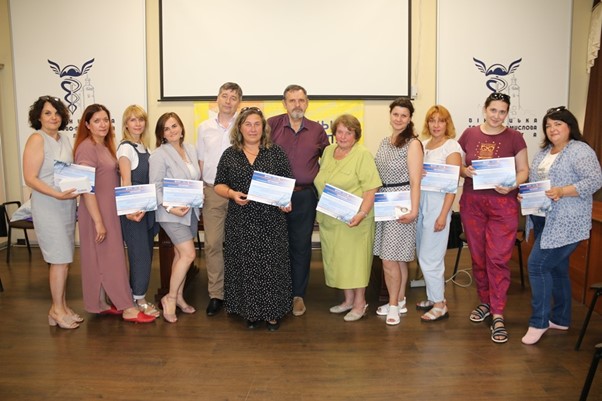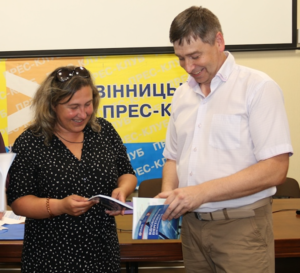
The field of renewable energy is growing and changing so rapidly that most people do not have up-to-date information—not only the public, but also journalists. This problem is particularly acute for regional media reporters. To fill this gap, the United States Agency for International Development (USAID) launched the initiative “Renewable Energy Education for Regional Journalists” through its Energy Security Project (ESP). ESP partnered with local non-governmental organization (NGO) Vinnytsia Press-Club to implement the initiative.
Almost 100 journalists joined four regional media schools in Vinnytsia, Odesa, Mykolaiv, and Kherson Oblasts. Among the teachers were power engineers and other practitioners, researchers, ecologists, and representatives of public institutions. Journalists noted that the most interesting and useful exercise was collecting information on renewable energy sites in their regions and mapping them, creating an easy reference tool to use in daily reporting. “All renewable energy sources of the region are clearly visible, immediately before your eyes,” said one participant.
The initiative developed the manual Renewable Energy for Journalists that covers nearly all aspects of renewable energy: types of energy sources, renewable energy development in Ukraine and worldwide, European Union energy legislation, integrated power systems, electricity market reform, green tariffs, active customers (prosumers), and smart grid technology. Written in plain language, the manual will deepen journalists’ understanding of the news and processes that the public needs to know. Nor is the manual restricted to journalists—anyone can access a free online version (in Ukrainian).
Under the same initiative, a four-lecture video course also focuses on journalists. In video lectures, renewable energy experts speak clearly talk about the history of renewable energy, the electric power system, green tariffs and auctions, and future trends in the field.
After media schools, the manual, and video lectures, journalists participated in a contest to demonstrate what they had learned. Submissions ranged from journalistic investigations and news coverage from renewable energy sites to analytical reviews and interviews.
 They analyzed prospects for renewable energy in Ukraine, explained its commercial and household benefits, and shared regional success stories of green energy projects. The winners show the range of topics these journalists have absorbed: “Prospects for Green Energy Development in Ukraine,” “Gas Production from Waste in Pervomaysk,” “Velykooleksandrivska Hydropower Plant: One Small Part of a Larger Reset,” and “Solar Generation in Ukraine Cannot Be Ignored.”
They analyzed prospects for renewable energy in Ukraine, explained its commercial and household benefits, and shared regional success stories of green energy projects. The winners show the range of topics these journalists have absorbed: “Prospects for Green Energy Development in Ukraine,” “Gas Production from Waste in Pervomaysk,” “Velykooleksandrivska Hydropower Plant: One Small Part of a Larger Reset,” and “Solar Generation in Ukraine Cannot Be Ignored.”
This initiative has increased awareness of renewable energy and its development prospects among both regional journalists and their audiences. It may also create more experts in the future: with the courses and publications occurring at the end of school year, ESP and Vinnytsia Press-Club also reached out to high school graduates to promote this issue and encourage them to pursue careers in renewable energy.
